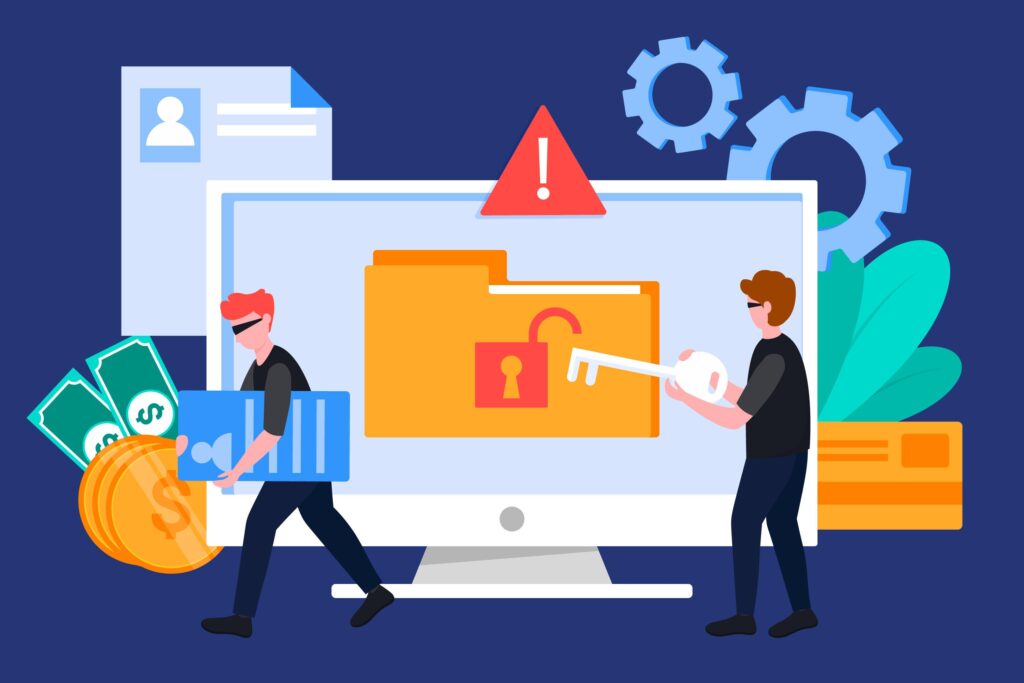In the digital age, the threat of cyberattacks looms large, and one particularly insidious form of attack is ransomware. This menacing digital menace can wreak havoc on individuals and organizations alike. But fear not, for knowledge is power. In this article, we’ll break down what ransomware is, how it works, and most importantly, how to protect yourself from becoming a victim.

What is Ransomware?
Ransomware is a type of malicious software that encrypts your files and locks you out of your own computer or network. To regain access, the attacker demands a ransom payment. It’s a bit like having your digital life held hostage until you pay the cybercriminal’s demands.
How Does Ransomware Work?
Ransomware attacks follow a few common steps:
-
Infection: Ransomware typically enters your computer through a phishing email, malicious link, or infected software download. Once it’s in, it starts encrypting your files.
-
Encryption: The ransomware encrypts your files using a complex algorithm. You can no longer access your files without a decryption key, which the attacker holds.
-
Ransom Demand: You receive a message from the attacker, explaining that they have your files and will provide the decryption key in exchange for a ransom payment. This payment is usually demanded in cryptocurrency to maintain the attacker’s anonymity.
-
Payment: If you choose to pay the ransom, you send the cryptocurrency to the attacker’s wallet. In return, they send you the decryption key.
-
Decryption: Once you have the decryption key, you can unlock your files, but there’s no guarantee that the attacker won’t come back for more.
Why is Ransomware Dangerous?
Ransomware is a significant threat for several reasons:
-
Data Loss: If you don’t have backups, paying the ransom may seem like the only option to recover your valuable data.
-
Financial Loss: Ransom payments can be substantial, and there’s no guarantee that paying will result in the safe return of your files.
-
Reputation Damage: For organizations, data breaches due to ransomware can damage their reputation and erode customer trust.
-
Operational Disruption: Ransomware attacks can disrupt critical operations and cause downtime for businesses, impacting productivity and revenue.
How to Protect Yourself from Ransomware
Now, let’s explore some strategies to help you stay safe from ransomware attacks:
-
Backup Your Data: Regularly back up your data to an external drive or a secure cloud service. Having up-to-date backups ensures you can recover your files without paying a ransom.
-
Use Antivirus Software: Install reputable antivirus software to help detect and block ransomware before it can infect your system.
-
Keep Software Updated: Regularly update your operating system and software to patch vulnerabilities that cybercriminals may exploit.
-
Beware of Phishing: Be cautious when opening email attachments or clicking on links. Many ransomware attacks start with a phishing email.
-
Ransomware Awareness: Educate yourself and your team about ransomware. Recognizing the signs of a potential attack is key to avoiding it.
-
Use Strong Passwords: Use complex, unique passwords for your accounts and enable two-factor authentication when possible.
-
Limit User Privileges: Restrict user permissions to the minimum required for their tasks. This limits the damage that can be caused if a ransomware attack occurs.
-
Email Security: Implement email security measures to filter out malicious emails and attachments before they reach your inbox.
-
Software Restriction Policies: Configure your system to only run authorized applications. This can prevent ransomware from executing on your computer.
-
Regular Updates: Keep your backup software up-to-date, and regularly test your backups to ensure they work when needed.
-
Use a Ransomware Decryption Tool: Some organizations and law enforcement agencies offer free decryption tools for specific ransomware strains. Keep an eye on resources like NoMoreRansom.org for such tools.
-
Don’t Pay the Ransom: The FBI and many cybersecurity experts advise against paying the ransom. Paying doesn’t guarantee you’ll regain your data, and it funds criminal activities.
What to Do if You’re a Ransomware Victim
If, despite your best efforts, you become a victim of a ransomware attack, here’s what you can do:
-
Isolate the Infected System: Disconnect the infected device from your network to prevent the ransomware from spreading.
-
Contact Law Enforcement: Report the attack to your local law enforcement agency.
-
Don’t Pay the Ransom: As previously mentioned, paying the ransom is discouraged by law enforcement and cybersecurity experts.
-
Restore from Backup: If you have backup copies of your files, use them to restore your data.
-
Use Decryption Tools: Check if there are decryption tools available for the specific ransomware strain you’ve encountered.
-
Rebuild and Strengthen Security: After resolving the issue, rebuild your system with stronger security measures in place.
Conclusion
Ransomware attacks are a serious and growing threat in the digital world. However, by following security best practices, staying informed, and using protective measures, you can significantly reduce the risk of becoming a victim. Remember, ransomware attackers rely on victims being uninformed or unprepared. By understanding the threat and taking proactive steps, you can safeguard your digital life and data from these menacing attacks.
Can I join?